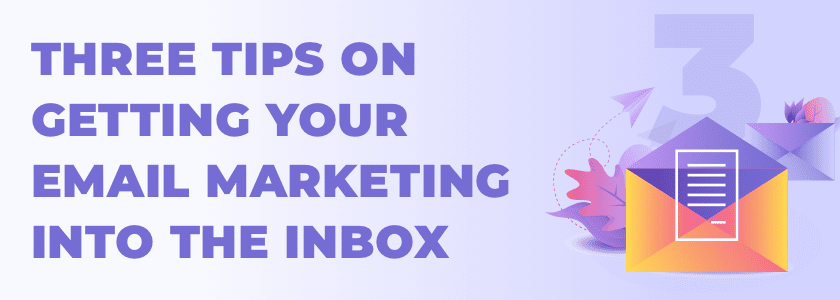Email deliverability may not be the first thing you, as an email marketer think about when sending your email campaign, but it can have a huge effect on the success of your campaign. In this blog post, we identify the potential delivery problems you may be facing, and provide you with the tips you need to assess and overcome these challenges in order to understand how to imporve your email deliverability rates.

The complete
deliverability
handbook
Read the most significant, most organized volume of information written about email deliverability.
Delivery and inbox placement: what’s the big deal?
So you’ve worked really hard in developing your email’s content, perfecting that attention-grabbing subject line and nailing your imagery — but what use is that if your recipient never gets to see your masterpiece? According to email delivery experts, Return Path, the global inbox delivery rate in 2017 was 85% (Return Path 2018 Deliverability Benchmark Report). If you’re seeing results within this region, our tips can still help you in maintaining high delivery rates & data quality, and if your stats aren’t on par with the global average, then now’s the time to act.
Your email recipients are hugely valuable. Even more so in the recent few years following the introduction of stringent data protection regulations across the globe. This shift in consumer-empowerment surrounding their own data and how it’s used puts even more pressure on your email campaigns to work as hard as possible for you. This makes getting into the inbox a hugely crucial step, so it’s time to really get to know your email deliverability.
Your emails’ delivery rate refers to how many, or the percentage, of your email campaigns that are making it through the many twists and turns of ISP (Internet Service Provider) filters. If successful, your email campaigns are then delivered to your recipients — the inbox or the spam folder, whichever one it may be. But it doesn’t end at just your delivery rate. Further to this, your inbox placement rate measures the percentage of those delivered emails landing specifically in the inbox.

via email
By signing up you are agreeing to our Terms of Service
Your data will be handled in accordance with our Privacy Policy
Houston, we have a problem…
If you’re experiencing low delivery rates or high bounce rates, then it’s clear you have a deliverability problem. You may also be seeing that a particular delivery vendor is not delivering your emails to a certain domain for example more of your emails are successfully delivered to Gmail inboxes than to Yahoo email address, which is a common issue many email marketers face. From here, the first stage in combating your problems lies in analyzing the key areas which contribute to your deliverability and inbox placement. Here are our top three areas to assess:
1. Firstly, your Sender Reputation
How ‘trustworthy’ you appear to the ISPs and mailbox providers is down to your sender reputation, and it’s this which decides where your emails will land; the inbox, the spam box, or nowhere near. ISPs determine your sender reputation by looking at a number of different factors surrounding how your recipients engage with your emails — if they open and how long they read for; if there is a high bounce rate from subscribers; if they engage with the content or send them to a friend; or if they delete without reading or complain.
Improving your sender reputation requires following legal regulations, operating clean mailing lists, carefully segmenting your email databases, providing personalized content and the careful craft of warming your IP address, to let mailbox providers know you’re there and that you’re safer. Taking the time to go through this process will build up your reliability and trust scores, showing that you’re not a spam artist and that your emails of a quality nature.
You may also find that different mailbox providers rate you differently, as they all use their own slightly tweaked models to assess your reputation. Use Ongage’s Email Delivery Provider Routing to help here, by specifying which domains to send to via which of your delivery vendors. For example, see from our reporting which of your sending domains provide the best deliverability rate, by filtering this by ISP. This then enables you to direct the traffic accordingly, maximizing the number of emails that make it to the inbox.
2. Next up, your data
Identify the current state of your data is your next priority. Your campaigns are only as good as the data they’re being sent to, and the cleanliness or ‘health’ of this data is imperative to achieving strong deliverability.
There are many ways in which you can gauge the current status of your recipient data. Metrics like soft bounce rates indicate a temporary deliverability issue developing which can have several causes including an issue with your sender reputation. Hard bounce rates give a clear indication that there is a permanent deliverability issue. As well as these, some of the less obviously data-related stats also count. For example, if you have a very low open rate percentage in relation to the size of your list, this could mean that a number of your emails are being sent to unused or ‘bot-owned’ inboxes. Pair these metrics with your own knowledge of your lists — asking yourself questions like where did this data come from? How old is it? What was the opt-in procedure? — to get a feel for your current position.
Using a double opt-in system, regularly cleaning your database and operating a clear & succinct unsubscribe process are all ways in which you can ensure the health of your subscriber data. This careful process of database management, incorporating a range of factors, is what will help you to positively impact your delivery rates.
3. Lastly, segmentation
Segmenting your lists wherever possible, and optimizing your content for each of these segments, will help you deliver personalized, tailored content for each audience type. Thus increasing the value of your communications to your subscribers and ultimately enhancing recipient engagement. Ongage’s Segment Manager helps email marketers plan and manage their segmentation strategy within one interface, serving tailored communications to a range of different audience segments across multiple mailbox operators. Use the Segment Manager to segment based on email behaviour rules (like opens and clicks), demographic rules based on your data records or external behaviours, such as website activity.
When thinking about your email content strategy, it’s absolutely key to ensure you’re spending as much time on planning out your content and aligning this to your emails’ value proposition, as you are considering the creative or the subject line.Think about this value proposition in relation to your different audiences, what they like, dislike, and how they engage with your brand and the content will follow suit. What your subscribers get out of your email marketing is what will keep them opening and clicking, and with studies showing that segmented emails can increase response rates by up to 355%, can you afford to wait?
Further to just segmenting your audiences, you could also consider segmenting your sending domains such as receipts@brandx.com and offers@brandx.com. Operating sub-domains, under your main ‘parent’ domain allows you to separate the types of campaigns you send in order to lessen the impact of any deliverability problems. For example, you could choose to split your sub-domains by engagement, to ensure your most-engaged audiences aren’t affected by any delivery problems and always get to see your emails, for maximum ROI. Alternatively, many retail and travel brands separate their transactional messages and marketing messages across two sub-domains, to ensure maximum delivery rates for those all-important transactional messages, and safeguarding them from any delivery issues caused with marketing-related emails.
The Email Marketing Activity Book for Kids

Where do you go from here?
The email channel is a greatly powerful tool for reaching and engaging with your customers, but only if they get to see the emails you are sending. Using the points above to recognize and combat your deliverability issues will help you to stay standing-out in the inbox.














